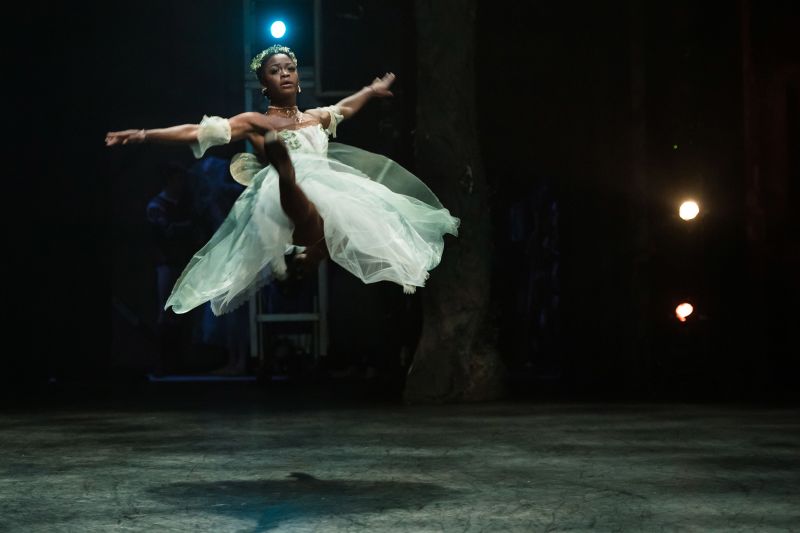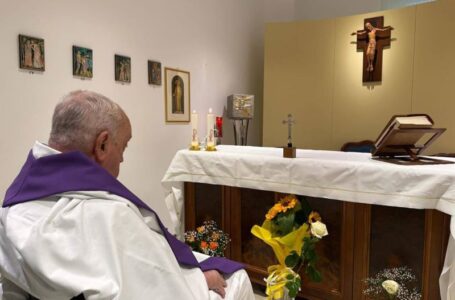US military shoots down Houthi drones as Trump’s strikes against terrorist group continue
Sierra Leone ballerina Michaela Mabinty DePrince, who starred in Beyoncé video, dies aged 29


Michaela Mabinty DePrince, the ballerina born during a civil war in Sierra Leone who performed in Beyoncé’s ‘Lemonade’ visual album, has died aged 29, according to an announcement posted to her official Instagram page.
“Her life was one defined by grace, purpose, and strength. Her unwavering commitment to her art, her humanitarian efforts, and her courage in overcoming unimaginable challenges will forever inspire us,” the post read.
“She stood as a beacon of hope for many, showing that no matter the obstacles, beauty and greatness can rise from the darkest of places.”
No cause of death has been given. Her sister Mia said she was in a “shock and deep sadness”.
DePrince made history as the youngest principal dancer at the Dance Theatre of Harlem and went on to dance with the Dutch National Ballet and the Boston Ballet, where she was a second soloist.
Her talent was brought to a wider audience with a cameo in ‘Lemonade’, the video that accompanied Beyoncé’s album of the same name. DePrince told the WSJ she thought it was a joke when she heard the singer wanted her for the video, who told DePrince in person it was an ‘honor’ to have her star.
Born during Sierra Leone’s brutal war and sent to live in an orphanage after both of her birth parents died – her father was killed by rebels and her mother starved to death – DePrince had an early life marked by the horrors of war.
At the orphanage, she was called “the devil’s child” and was ill-treated by orphanage carers because she had vitiligo – a skin condition that causes blotches of lightening skin. She witnessed one of her teachers be murdered by rebels and was stabbed by a little boy while trying to save her.
Called Mabinty Bangura when she was born, DePrince first saw a ballerina on the cover of a magazine outside the orphanage when she was just three years old.
“I was just so fascinated by this person, by how beautiful she was, how she was wearing such a beautiful costume,” said DePrince. Though she had no idea what ballet was, she kept the magazine cover and dreamt of one day becoming as happy as the dancer in the photo.
Shortly after, DePrince was adopted by a couple from New Jersey and began a new life in the United States. Her family nurtured her love for ballet and enrolled her in classes.
“From the very beginning of our story back in Africa, sleeping on a shared mat in the orphanage, Michaela (Mabinty) and I used to make up our own musical theater plays and act them out. We created our own ballets,” wrote her sister Mia, who was also born in Sierra Leone and adopted by the same family, in a statement.
DePrince went on to earn a full scholarship to the American Ballet Theater’s summer intensive at the age of 13 and earned another scholarship in the youth America Grand Prix, the biggest ballet competition in the world.
It was not a journey without prejudice. As a Black girl in the predominantly white preserve of ballet, she almost quit at the age of 10 when a teacher said she did not want to put effort and money into Black dancers.
“Despite being told the ‘world wasn’t ready for black ballerinas’ or that ‘black ballerinas weren’t worth investing in,’ she remained determined, focused, and began making big strides,” wrote dancer Misty Copeland in a tribute posted to social media. “Michaela had so much more to give,” she added.
In 2014, DePrince co-authored a memoir about her life with her adoptive mother called ‘Taking Flight: From War Orphan to Star Ballerina’ and went on to become an ambassador for War Child Holland, promoting the well-being and mental health of children living in war zones.
“This work meant the world to her,” wrote her family in their statement, asking that people donate to the organization in her memory.











